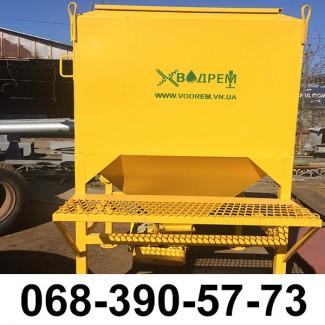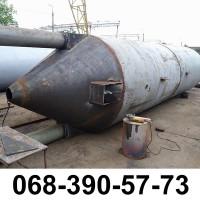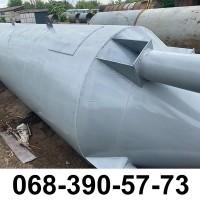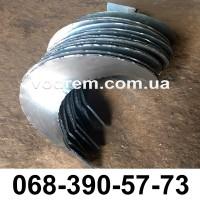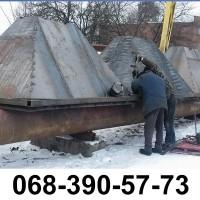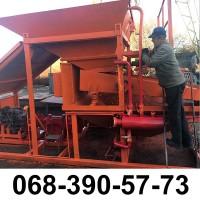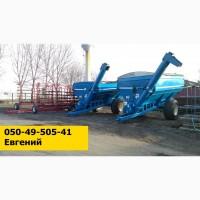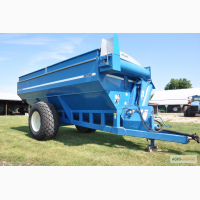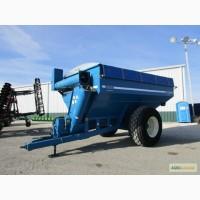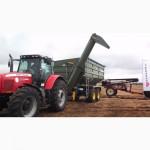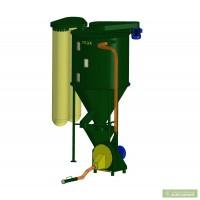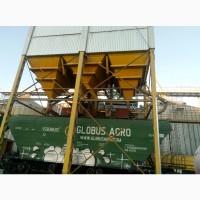Sell / buy
Grain bunker, Vinnytsia region.
Price1000 UAH .
Region:
Vinnytsia region.
(Vinnytsia, Skladska St., 4)
Updated:
Bunker forgrain is a special container or tank used for storing and temporarily holding grain. It is often used in agriculture and the grain industry to store grain before further processing, transportation or unloading.
The main characteristics of a grain hopper may include:
Capacity: A grain hopper has a certain capacity that determines its ability to store grain. Capacity can vary from small containers for domestic use to large hoppers for industrial scale.
Design: A grain hopper can have a variety of designs, including rectangular, cylindrical, or conical. The structure must be strong and stable enough to withstand the weight of the grain and the influence of external factors such as wind, temperature changes and other loads.
(//tractor-service.com)
Ventilation: The grain hopper can be equipped with a ventilation system that ensures sufficient exchange of air, moisture and temperature inside the hopper. This can be important to preserve grain quality and prevent mold or other harmful conditions.
Safety devices: A grain hopper can be equipped with safety devices such as level sensors, temperature sensors, safety tripping systems or fire extinguishing systems to ensure safety and control of storage conditions.
Input and output: The grain hopper has input and output openings for loading and unloading grain. They can be equipped with mechanisms for flow control and grain level regulation.
Supporting elements: The grain hopper must have sufficient number and strength of supporting elements, such as legs, racks or foundation, which ensure the stability and reliability of the structure.
Access and maintenance: The grain bunker must be accessible for maintenance, including inspection, cleaning and repair. This may include hatches, doors or other open mechanisms for convenient access.
The main characteristics of a grain hopper may include:
Capacity: A grain hopper has a certain capacity that determines its ability to store grain. Capacity can vary from small containers for domestic use to large hoppers for industrial scale.
Design: A grain hopper can have a variety of designs, including rectangular, cylindrical, or conical. The structure must be strong and stable enough to withstand the weight of the grain and the influence of external factors such as wind, temperature changes and other loads.
(//tractor-service.com)
Ventilation: The grain hopper can be equipped with a ventilation system that ensures sufficient exchange of air, moisture and temperature inside the hopper. This can be important to preserve grain quality and prevent mold or other harmful conditions.
Safety devices: A grain hopper can be equipped with safety devices such as level sensors, temperature sensors, safety tripping systems or fire extinguishing systems to ensure safety and control of storage conditions.
Input and output: The grain hopper has input and output openings for loading and unloading grain. They can be equipped with mechanisms for flow control and grain level regulation.
Supporting elements: The grain hopper must have sufficient number and strength of supporting elements, such as legs, racks or foundation, which ensure the stability and reliability of the structure.
Access and maintenance: The grain bunker must be accessible for maintenance, including inspection, cleaning and repair. This may include hatches, doors or other open mechanisms for convenient access.
|
Shop, contacts | |
Evheny / feedback, info. / activity evaluation | |
|
Телефон:
+38(xxxxxx
show
| |
| Viber: || |217380683905773 | |
| https://vodrem.com.ua/ | |
| instagram.com/vodrem.com.ua | |
| youtube.com/ channel/UCKKFW6FpYgkyBMhMw2sB37w | |
ID оголошення: #1259108
(added by a registered user, registration date: 01-27-2022)
Added / Updated: 08-30-2024 12:23 (current, until: 30-08-2025)
Permanent Ad Address:
Shows / views for today: ?, total: ?
Similar ads
There are many interesting...
Всього 55 similar adsin the heading "Storage, receiving, unloading bunkers"
All Ukraine:Agricultural machinery, equipment, inventory 51248 / | ||409Післязбиральна обробка, зберігання (обладнання) 1541 / Storage, receiving, unloading bunkers 55
Vinnytsia region: Agricultural machinery, equipment, inventory 844 / Post-harvest processing, storage ( equipment) 98 / Storage, receiving bunkers , unloading machines 2
